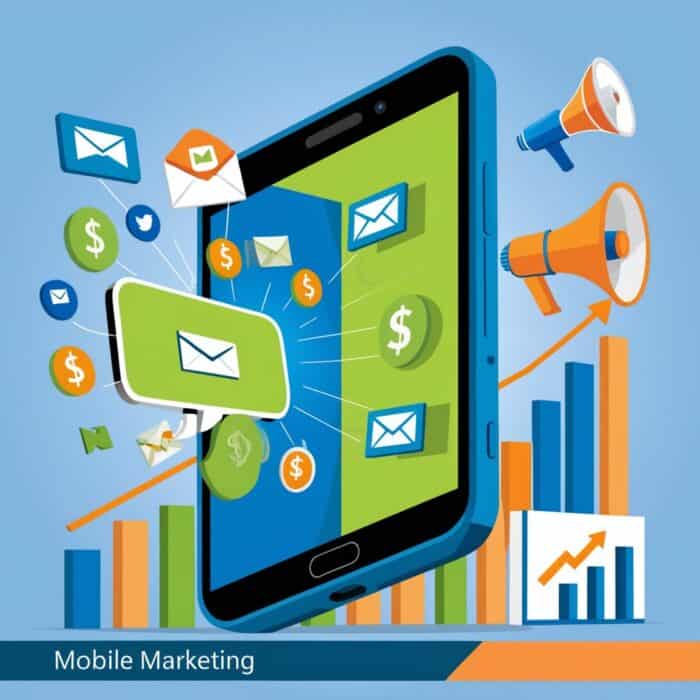
Mobile marketing
Introduction to Mobile Marketing
The proliferation of mobile devices is dramatically reshaping the modern marketing landscape. By 2024, it’s projected that there will be approximately 18 billion mobile devices worldwide, significantly surpassing the global population. This surge in mobile technology has evolved from the first generation (1G) in the early 1980s to the current fifth generation (5G), enabling faster data transmission and more stable connections.
Mobile devices have become an integral part of our daily lives, serving as multifunctional tools for communication, shopping, photography, video creation, music streaming, social networking, document sharing, gaming, and movie streaming. These digital devices essentially contain most aspects of our lives – from our contact databases to our wallets, event reminders, tickets, and personal media libraries.
The unique aspect of mobile devices lies in their personal nature and constant proximity to users. This device proximity and dependence create unprecedented opportunities for digital marketing. Additionally, the growth of wearable technology and implantable devices is further expanding the scope of mobile marketing. Wearable technology, defined as advanced sensor and computing technologies worn on the body during daily activities, has seen significant growth, with smartwatch sales increasing from 325 million units in 2016 to over 1 billion in 2020.

The Role of Mobile in Marketing
Mobile marketing is disrupting traditional marketing efforts through several key features. Ubiquitous computing provides direct access to technology anytime and anywhere. Instant access offers immediate entry to software, whether it’s an app, voice search, or online space. Price comparison allows users to check and compare prices online and offline on the spot. Real-time transactions enable easier processes for ordering food, booking transport, securing accommodation, and buying tickets in real-time. Finally, digital wallets facilitate payments through mobile devices.
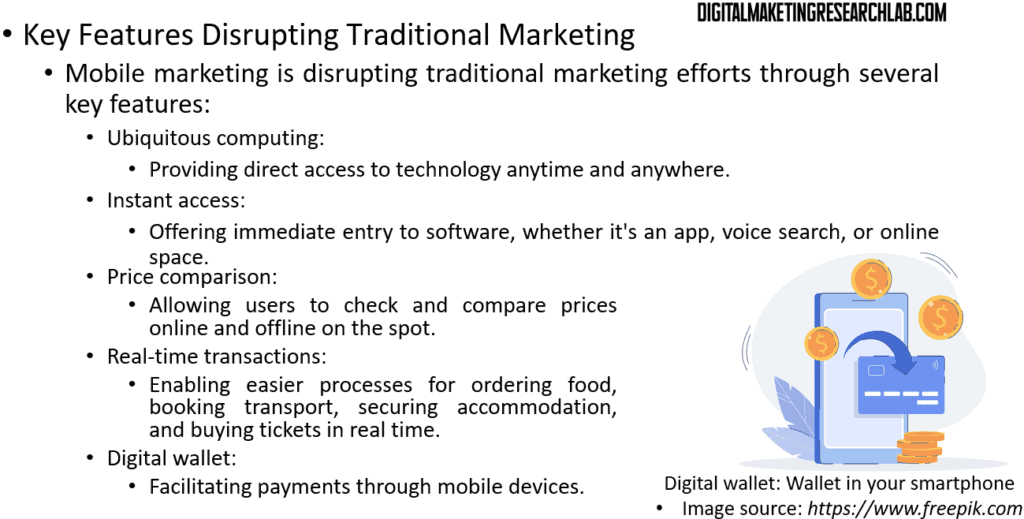
The 5Ps Framework for Personalized Mobile Marketing
To address the unique aspects of mobile marketing, researchers have developed the 5Ps framework, which is an extension of McCarthy’s traditional 4Ps. In this framework, Product refers to mobile products considered to be apps within the device as well as mobile payment methods. Price in mobile marketing offers greater flexibility, allowing for dynamic or flexible pricing based on demand. Place recognizes that the mobile device is not in a fixed location but in a dynamic place. Promotion focuses on the unique delivery options available through mobile devices. Lastly, Prediction involves examining user data to understand and respond to patterns of behavior.
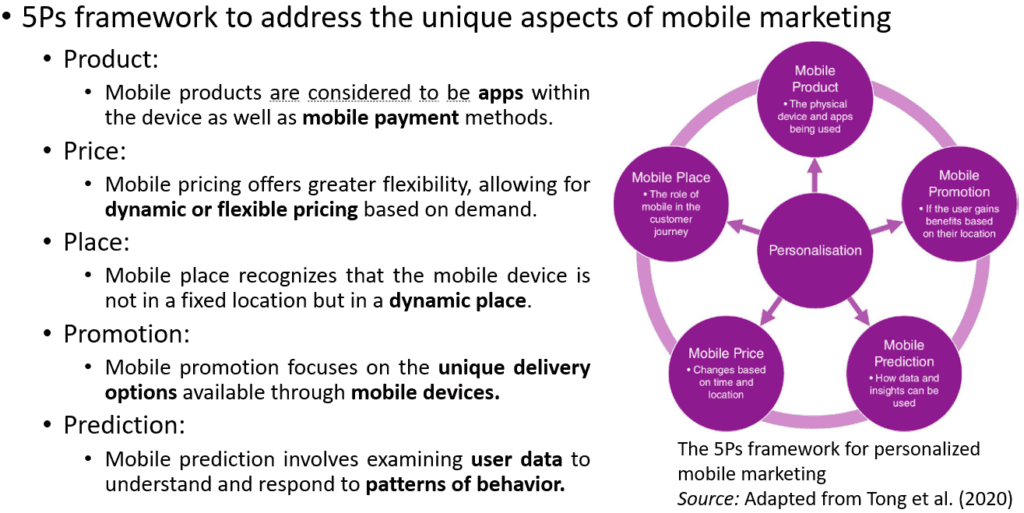
Mobile Products and Apps
Mobile products encompass both apps within devices and mobile payment methods. The app market has grown exponentially from just 500 apps in 2008 to millions today. Apps are created in three main formats. Native apps are developed for use on a specific platform (iOS or Android) and to work offline. They offer advantages such as compatibility with device hardware and software, geofencing capabilities, and fast loading times. However, they can be more expensive to develop. Progressive Web Apps (PWAs) are web apps that look and function like native apps. They offer advantages such as fast loading times and no need for installation, but they require internet access and may have limited offline functionality.
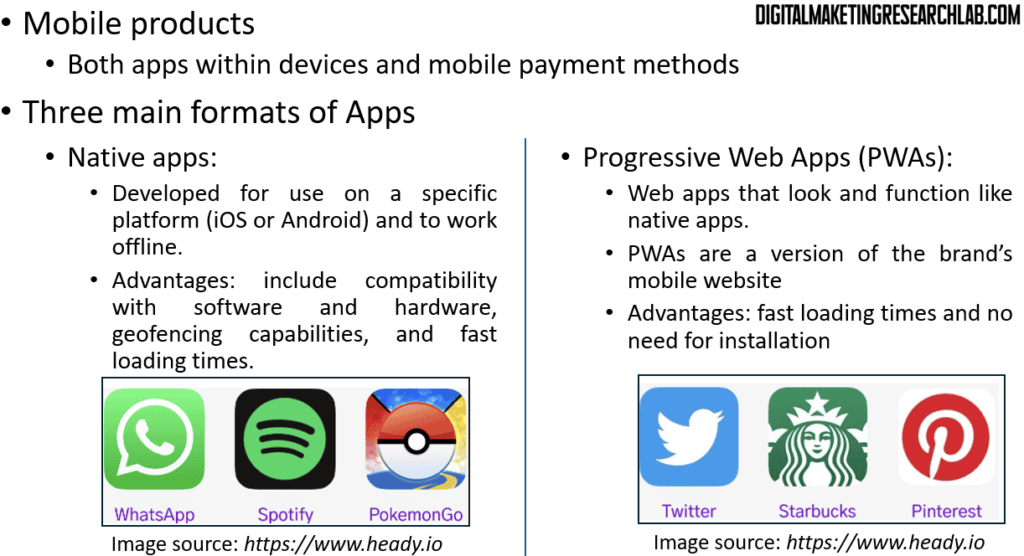
Hybrid apps work across different platforms and are part native app and part web app. They offer lower development costs and faster development times but may have limited visual design options.
The app development process typically involves several stages. These stages include defining the purpose, identifying the target audience, designing the app (often starting with wireframes), development, user interface design, testing, deployment, promotion, updates, and measuring results.

Mobile Promotion Strategies
Mobile promotion offers various delivery options, from SMS to in-app messages and push notifications. Key strategies include SMS Marketing, which is used for booking confirmations, service appointment reminders, transaction notifications, and verification codes. Push Notifications are powerful mobile marketing tools designed to interrupt and promote content to the reader. They require authorization from the user and can be personalized based on location and context. QR Codes can be used for various purposes, including providing product information, facilitating venue check-ins, and delivering additional content. Location-based or Proximity Marketing involves using mobile phone technology to send immediate offers to customers as they enter a store or specific location.
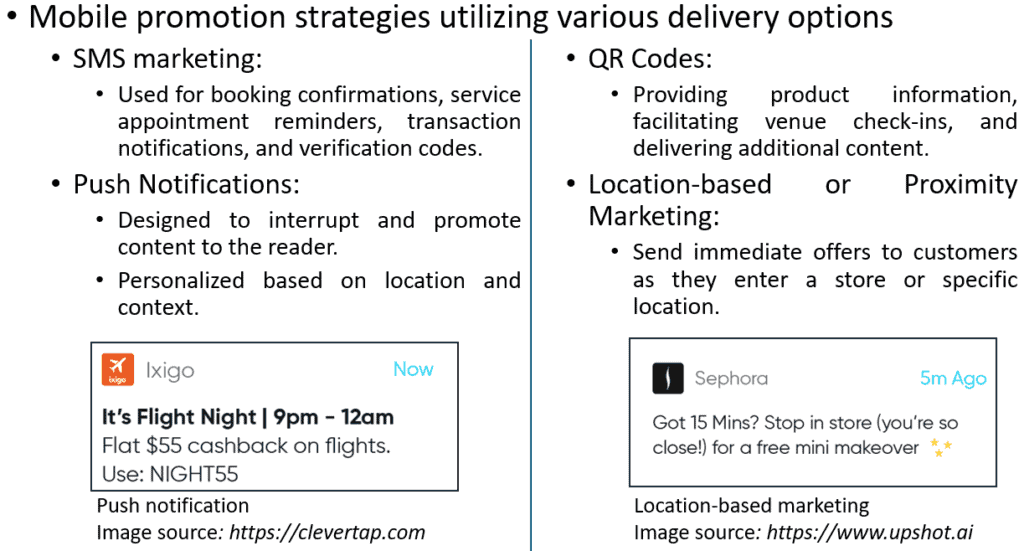
Mobile Commerce
Mobile commerce, or m-commerce, involves the use of mobile devices to conduct electronic transactions. Key elements of successful mobile commerce include the ubiquity of services, where mobile shopping removes spatial and temporal constraints, allowing consumers to shop from any place at any time. Website design is crucial, as the mobile site needs to be easy to use and useful for shopping purposes. Fulfilment is important, as consumers need to see that placing an order via a mobile device provides delivery of products within a suitable time.
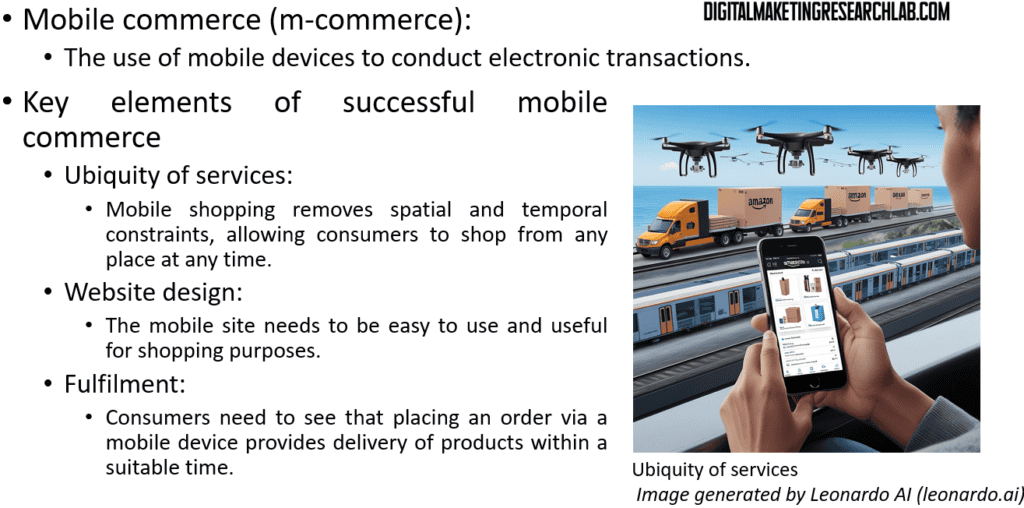
Customer service, specifically the ability to respond to consumers’ needs via the mobile website, is crucial for mobile service quality. Finally, security and privacy are key, ensuring that consumers’ personal information and payment details are protected.
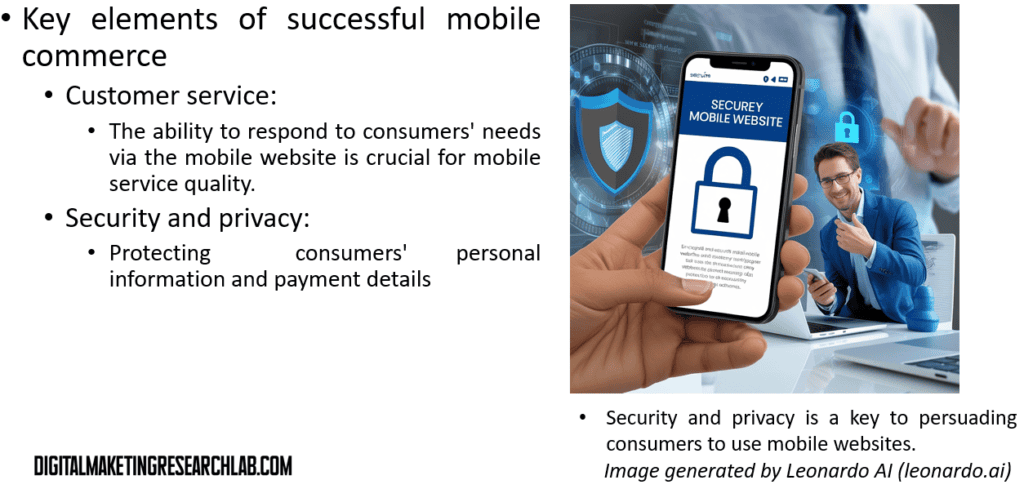
Conclusion
Mobile marketing has revolutionized the traditional marketing landscape, leveraging the ubiquity and personal nature of mobile devices to create unprecedented opportunities for businesses. The 5Ps framework (Product, Price, Place, Promotion, and Prediction) offers a comprehensive approach to mobile marketing strategy, addressing the unique aspects of this digital medium. From native apps to push notifications and location-based marketing, mobile technology enables highly personalized and context-aware promotional efforts. As mobile commerce continues to grow, businesses must prioritize user-friendly design, efficient fulfillment, responsive customer service, and robust security measures to succeed in this rapidly evolving digital marketplace.

*Reference
Hanlon, A. (2021). Digital marketing: strategic planning & integration. Sage.